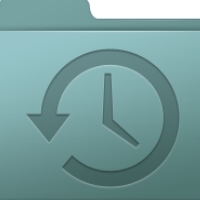
By Leo Notenboom
“In my local free paper, I read a headline, “Internet full, please try
later…” The article basically said they have run out of IPv4 numbers and, to
quote directly, “Consumers using older software such as Windows XP and many
household broadband modems cannot read IPv6 … and websites with new-style
addresses may not be accessible to many users.” What do you know about
this?
At work, we still have a couple of Windows 9.x and Windows ME computers. I
also have an older game machine with Windows 98. Will all three still work when
IPv6 arrives?”
There were a few news reports in recent weeks describing how the internet is
running out of the addresses used to identify individual computers. As a
result, the internet is moving to a new addressing scheme that will allow substantially more connections.
The headlines that I keep seeing are all pretty sensationalistic.
The reality, I believe, is a lot more boring and doesn’t make for gripping
news articles.
The average consumer does not need to worry. At least, not
for a long time.
IP? v4? v6?
First, let’s remove some mystery. “IP” is the IP in TCP/IP, and stands for
Internet Protocol – the basic language of machines and devices
communicating with each other. V4 simply indicates that this is the fourth version of
the protocol.
In IPv4, each device connected to a network is uniquely identified by a
number between zero and four billion. OK, not exactly zero and four billion,
because some numbers are reserved, but you get the idea.
That’s the number that you often see expressed as four smaller numbers
separated by periods. For example, the IP address of the server hosting Ask Leo!
on the internet is today 67.225.235.59. I say today because it’s been
different in the past and could change tomorrow. That’s why you use the address
ask-leo.com to get to the site, not the IP address.
There was a time when four billion seemed like more than enough, yet
current estimates are that we will run out sometime in 2012.
As a result, IPv6 changes the addressing scheme to be four times
bigger. No, not four times four billion, but rather four billion raised to the fourth
power.
Put another way, with IPv6, we could theoretically have
340,282,366,920,938,463,463,374,607,431,768,211,456 addresses on the
internet.
What happens when we run out of IPv4?
Not a lot, really. If we run out, then it becomes more difficult to put
more machines directly on the internet. All of the existing machines, servers, and
services could keep on running as they did before, and more machines could always be
connected via NAT routers, as you probably do today.
There just wouldn’t be any room to add more directly to the
internet. That’s where some of these “The Internet Is Full” headlines have come
from.
So, what that means to you is …
FaceBook URL: Leo’s Facebook
Twitter URL: http://twitter.com/askleo



